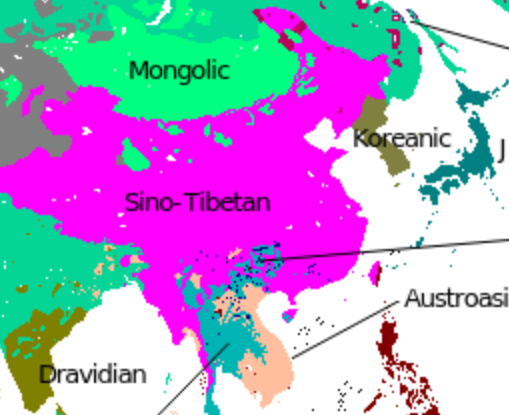The Xin Da Ya translation theory is one of the most famous and influential translation theories in China. Within the country, the theory is so well-known that it would not be surprising to find people outside of the translation community who have likely heard or come across the phrase, despite the phrase Xin Da Ya first being coined by the Chinese scholar and translator Yan Fu over 100 years ago.
Unfortunately, it is also widely misunderstood and largely useless for producing effective translations in a modern context. Modern translation approaches, such as Skopos Theory or corpus linguistics, focus on understanding the true meaning of a source text within its context and have proved time and again to lead to much better translations. However, many Chinese translators still stubbornly rely on using Xin Da Ya to judge translation value, even when doing so misleads them into making poor translation decisions.
Misconceptions of the Xin Da Ya Theory
The very first thing that most people, even some professional translators I’ve spoken to, get wrong about Xin Da Ya is the mistaken belief that it is a set of translation standards that should be followed or a set of criteria that translators should look to satisfy when creating a translated work. Very briefly, the term Xin refers to the faithfulness of a translation, Da refers to ”fluency” or “expressiveness,” a concept which I would describe as being similar to transparency today, and Ya refers to the elegance or beauty of the prose employed. Xin Da Ya is thus often misunderstood as the requirement that translations ought to be faithful, transparent, and written in elegant prose, all at the same time.
However, Yan Fu was simply describing what he believes to be when he first brought up the term in 1898 in a translator’s preface to his Chinese translation of Thomas Huxley’s Evolution and Ethics, one of his most famous representative works. In the original classical Chinese text from this preface, he states: “yi zhe shan nan: xin, da, ya,” which can be directly translated to mean “The three difficulties of translation are: faithfulness, transparency, and elegance.”
In doing so, Yan Fu was merely attempting to justify his translation strategy for Evolution and Ethics and was not making any sort of grand statement or formal theory for how all translations should be carried out. Later on in the preface, he goes on to state that he ultimately judged Da as being the most important for this particular translation, with the reasoning that translations that can’t be understood by their intended audience would be useless, and chooses to sacrifice strict faithfulness to the source text in favor of making his translation more transparent and understandable to Chinese readers. Yan Fu himself makes it clear that he considers it impossible to achieve all three aspects of Xin Da Ya at the same time and instead only uses these three metrics to better explain his final translation choices for Evolution and Ethics.
Revolutionary for its Time
While Yan Fu’s translation style of almost completely re-writing the original text has also been criticized for injecting too much of his subjective interpretations, Xin Da Ya represented a new way of thinking about translation when first introduced. The other prevalent translation theory in China during the same late-Qing dynasty period was one championed by Lu Xun, another influential writer of the time. He advocated for a translation style that emphasized faithfulness above all else. He believed that the main purpose of any translation was to introduce foreign cultures and society to a Chinese audience, best accomplished by deliberately making translations feel exotic and using literal translations as much as possible. Instead of using existing Chinese expressions in his translations, his strategy was to translate new western concepts literally word-for-word, intentionally inventing new words that he believed should be introduced into the Chinese vocabulary (not unlike the awkward “Chinglish” translationese still used by some Chinese to English translators today). This style would later be described as “hard translation.”
In this historical context, Yan Fu’s idea of what a translation should be is much closer to what we consider translation to be today. At the very least, he recognized the importance of making translations intelligible and easily accessible to their readers; Lu Xun’s hard translation approach might be a valid strategy for introducing some genuinely foreign Western concepts to Chinese readers, but, at best, it is an inefficient method of conveying information, and, at worst, easily misinterpreted. Yan Fu translated works on logical fields of study, such as Adam Smith’s Wealth of Nations and John Stuart Mill’s A System of Logic, into classical Chinese that could be understood by other Chinese academics and scholars, whereas Lu Xun sought to create an entirely new set of Chinese language by translating Western texts word-for-word, an act which falls entirely outside of what we consider as translation today.
Outdated and Irrelevant
However, while perhaps applicable in the 19th century, Yan Fu’s three Xin Da Ya metrics are outdated today. There are many modern translation theories better suited for contemporary translation, particularly for translation firms providing translation as a service to their clients. The main problem with Xin Da Ya is that it gives translators the false idea that there is a need to balance each of these three aspects and decide on which ones to prioritize and which to sacrifice. This is a fallacy on several different levels. First, there is often no need to “balance” each aspect of translation at all in many commercial translations. Many native Chinese translators I’ve spoken to fall into the trap of thinking that there are “Chinese ideas” about certain topics and “English ideas” on the same. In order to get these inherently “Chinese ideas” across transparently, either eloquence or faithfulness has to be sacrificed. However, these topics are often very objective. For instance, when translating a Chinese text on semiconductors, it is definitely possible to find the right English words to describe semiconductors in a faithful, eloquent, and easily understandable way
Second, the idea that the three Xin Da Ya metrics are important at all is flawed. These metrics misrepresent the real translation decisions a translator should be making. Instead of thinking about how to make their translation meet these metrics, translators should only be thinking about how to create a translation that best serves the client’s purpose. Unlike in the past, when translation was often a purely academic exercise, commercial translations today are requested by a client to serve some real and specific purpose. The value of a translation and the service provided by a translator lies in how well they can fulfill this purpose, not by how well they have managed to balance Xin Da Ya.
In fact, the illusion that Xin Da Ya should be balanced by sacrificing one aspect of a translation for another can mislead translators into making major mistakes. For example, there are laws in the US against sending personal data to regions with poor data security, which includes the PRC. However, legal translators I’ve talked to in Shanghai often express that this doesn’t make sense. From their perspective, it confuses them how the US considers the PRC a region with poor data security and thus decide that the law must be referring to something else. In deciding to make the translation more “transparent,” consistent with Xin Da Ya, they’ve interpreted these US laws as instead saying that user data cannot be sent to countries where the company in charge of this data has poor data security. Obviously, this misunderstanding can have extremely serious consequences. It may even be at the root of the current controversy surrounding TikTok allowing China-based employees to access US user data in a clear violation of US data laws.
Similarly, China’s failure to export popular domestic brands overseas can be partly attributed to poor localization and translation influenced by Xin Da Ya. While Western cultural exports like Hollywood movies and popular online games often become global phenomena, you would be hard-pressed to find similar success stories for Chinese products, many of which are only popular domestically. WeChat, by far the most dominant messaging app in China, has repeatedly failed to expand overseas despite massive investment in international marketing. The same goes for Tencent’s attempts to launch its top-ranking mobile game “Honour of Kings” abroad, which ultimately failed due to poor marketing and localization mistakes. In many of these cases, Chinese translators following Xin Da Ya make poor translation decisions that can be easily avoided by thinking about what goals the client wants to achieve with their translation. Lulled into a false sense of security, they see unnatural sentence structure or “Chinglish” as necessary sacrifices to make in order to stay “faithful” to the source or make unnecessary additions and omissions to the source to improve “transparency,” none of which are in the client’s best interests.
Anecdotally, the top Chinese legal translation experts I’ve spoken to, including professors at translation programs, don’t bring up Xin Da Ya for this reason. Many of them have also embraced more modern and Western approaches to translation. No longer a purely academic activity, translation has mostly become a type of service with specific commercial goals in mind, and translation theories have also changed to reflect that.
Modern Alternative Theories
More modern approaches to translation generally disregard the entire notion of needing to “balance” certain aspects of a translation. Vermeer’s 1978 Skopos Theory focuses entirely on defining the purpose of a translation and then crafting a translation best able to serve this purpose, disregarding any need to be particularly faithful, transparent, or eloquent as long as this purpose is served. These metrics can still be used to describe the final translation created via Skopos Theory, but they are not requirements that the translator consciously sets out to fulfill during translation. The same source document can also be effectively translated in entirely different ways to suit different purposes. In contrast, Xin Da Ya (wrongly) suggests that there is only one optimum, balanced way to translate a document.
Other theories, such as Sarcevic’s “receiver-oriented” approach to legal translations, call for the translator to ensure that translated legal documents are understandable and correctly interpreted in the target legal context. Corpus linguistics, a computer-based analysis of native language text that determines how frequently a word is used and in what context, is often used to support these usage-focused translation styles to determine what the source text actually means and make translations sound natural in the target language. While translators attempting to apply the Xin Da Ya often rely on their intuition for how to express meaning in a “faithful” or “transparent” way, corpus linguistics provides an empirical method to prove what faithful and transparent language actually is by using parallel native texts as evidence.
Conclusion
Xin Da Ya played an important role in Chinese translation history, but it is heavily flawed compared to more modern and usage-focused translation theories. The theory gives translators the illusion that their translation work should be judged on how effectively it balances Xin (faithfulness), Da (transparency), and Ya (elegance), which is a misguided approach for commercial translations provided as a service to the client. Instead, creating a translation able to fulfill the client’s purpose should be the most important consideration, and more modern translation theories like Skopos Theory are much better suited for guiding translators in achieving this goal.
Outside of translation, balancing as a concept has largely gone the way of the dodo in various cultures – we don’t expect any doctor today to go around attempting to balance the body’s humors, as the ancient Greeks and Romans once did. The same should be said for the Xin Da Ya as a translation theory.

